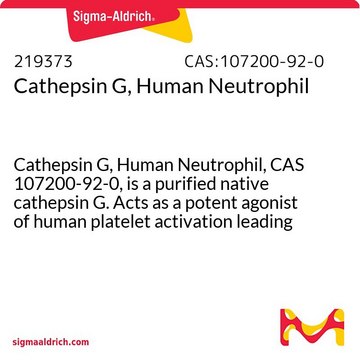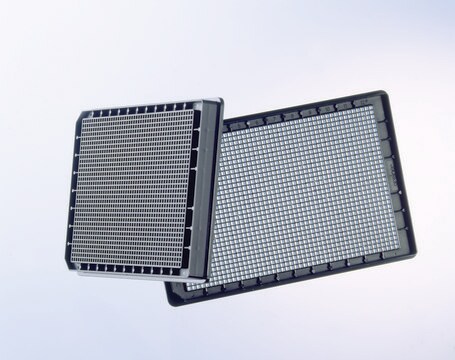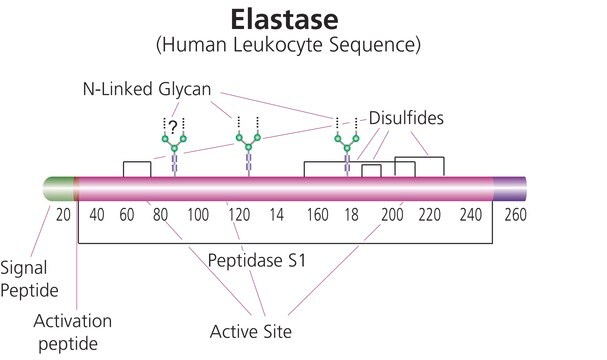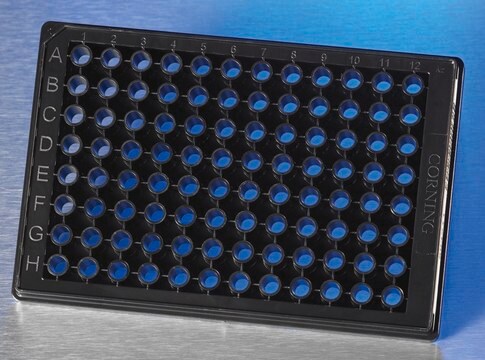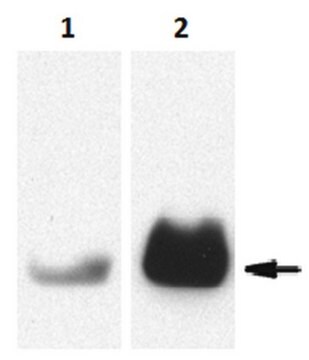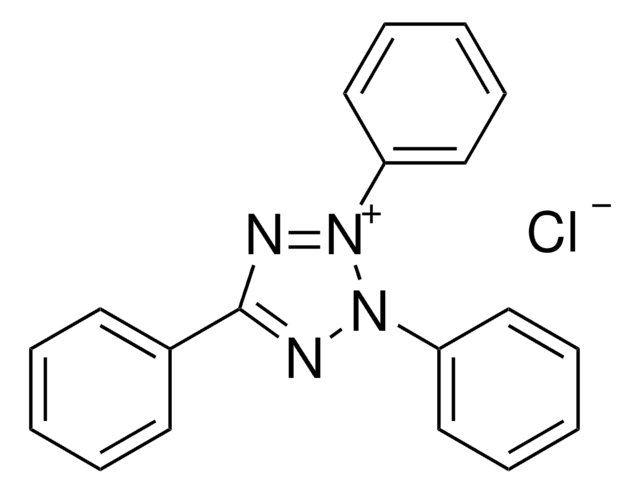MABT1240
Anti-Cathepsin G Antibody, clone AHN-11, Ascites Free
clone AHN-11, from mouse
Sinónimos:
Cathepsin G, CatG, CG
About This Item
Productos recomendados
origen biológico
mouse
Nivel de calidad
forma del anticuerpo
purified immunoglobulin
tipo de anticuerpo
primary antibodies
clon
AHN-11, monoclonal
reactividad de especies
human
técnicas
ELISA: suitable
immunocytochemistry: suitable
radioimmunoassay: suitable
western blot: suitable
isotipo
IgG2aκ
Nº de acceso NCBI
Nº de acceso UniProt
modificación del objetivo postraduccional
unmodified
Información sobre el gen
human ... CTSG(1511)
Descripción general
Especificidad
Inmunógeno
Aplicación
Cell Structure
Inflammation & Autoimmune Mechanisms
Immunocytochemistry Analysis: Clone AHN-11 hybridoma culture supernatant immunostained ethanol-fixed human neutrophils, but not other peripheral blood cells, including platelets, lymphocytes, and eosinophils. Faint immunostaining of some monocytes was occasionally detected (Skubitz, K.M., et al. (1989). J. Leukoc. Biol. 46(2):109-118).
ELISA Analysis: A representative lot captured cathepsin G from human neutrophil granule extract. The captured cathepsin G served to detect the presence of serum cathepsin G autoantibody levels in patients serum samples (Ellerbroek, P.M., et al. (1994). J. Clin. Pathol. 47(3):257-262).
Radioimmunoassay Analysis: Clone AHN-11 hybridoma culture supernatant bound to well surface coated with dried human neutrophils, but not platelets or erythrocytes by solid-phase radioimmunoassay (Skubitz, K.M., et al. (1989). J. Leukoc. Biol. 46(2):109-118).
Radioimmunoassay Analysis: Clone AHN-11 hybridoma culture supernatant bound to well surface coated with content of primary granule, but not secondary granule, plasma membrane, or cytoplasm fraction from neutrophils by solid-phase radioimmunoassay (Skubitz, K.M., et al. (1989). J. Leukoc. Biol. 46(2):109-118).
Radioimmunoassay Analysis: Clone AHN-11 hybridoma culture supernatant reacted with purified human cathepsin G, but not elastase, EPO, esterase N, proteinase 3, plamin, kallidrein, lactoferrin, MBP, or thrombin by solid-phase radioimmunoassay (Skubitz, K.M., et al. (1989). J. Leukoc. Biol. 46(2):109-118).
Calidad
Immunocytochemistry Analysis: A 1:200 dilution of this antibody detected Cathepsin G in HL60 human promyelocytic leukemia cells.
Descripción de destino
Ligadura / enlace
Forma física
Almacenamiento y estabilidad
Otras notas
Cláusula de descargo de responsabilidad
¿No encuentra el producto adecuado?
Pruebe nuestro Herramienta de selección de productos.
Código de clase de almacenamiento
12 - Non Combustible Liquids
Clase de riesgo para el agua (WGK)
WGK 1
Punto de inflamabilidad (°F)
Not applicable
Punto de inflamabilidad (°C)
Not applicable
Certificados de análisis (COA)
Busque Certificados de análisis (COA) introduciendo el número de lote del producto. Los números de lote se encuentran en la etiqueta del producto después de las palabras «Lot» o «Batch»
¿Ya tiene este producto?
Encuentre la documentación para los productos que ha comprado recientemente en la Biblioteca de documentos.
Nuestro equipo de científicos tiene experiencia en todas las áreas de investigación: Ciencias de la vida, Ciencia de los materiales, Síntesis química, Cromatografía, Analítica y muchas otras.
Póngase en contacto con el Servicio técnico